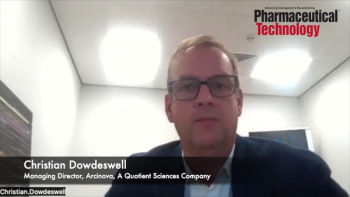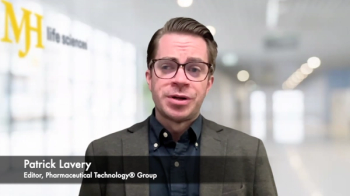
- Pharmaceutical Technology-03-02-2006
- Volume 30
- Issue 3
A New Development Paradigm
Pharmaceutical companies are seeing the development process in a new way, and that has major implications for service providers.
The effort to improve the effectiveness of research and development spending continues to be one of the most important stories in the pharmaceutical industry. Major pharmaceutical companies know they cannot continue to get such paltry returns from the billions of dollars they spend on new product development. They need more new products to drive their top-line growth, and they need to develop those products less expensively in the face of growing pressures to reduce drug prices.
Jim Miller
Companies are pursuing multiple strategies to improve R&D productivity. A key focus has been to improve decision-making processes within their R&D organizations, with the objective of getting scientists to make go–no-go decisions about candidate compounds more quickly and definitively. R&D executives are setting aggressive targets for the number of new compounds that graduate from discovery to development each year and are installing incentive compensation programs and management review processes that reward the attainment of those objectives. Among major pharmaceutical companies, Wyeth (Madison, NJ,
A second strategy has been to find lower-cost venues for conducting R&D operations. Sourcing from low-cost countries is all the rage in Big Pharma, especially for clinical research and drug discovery services. Most major pharmaceutical companies have established clinical data management operations in India, and a growing number are setting up multiyear relationships with discovery chemistry companies in India and China involving hundreds of chemists. Conducting clinical trials in Eastern Europe and Asia has the dual benefits of lower cost and ready access to treatment-naïve patients.
Focusing on proof of concept
A third initiative has been to kill unpromising candidates and refine promising ones earlier in the development process. Pharmaceutical company executives have long been aware that too many candidates with toxicity or efficacy problems were being allowed to pass into Phase III, in which trials are most expensive and manufacturing expenditures begin to accelerate. They are finally doing something about that problem by investing more time and effort in preclinical and early clinical testing to identify and rectify problems before the candidates reach Phase III.
This focus on fixing problems sooner is changing the way pharmaceutical executives think about and manage the drug development process, says Joseph Herring, the CEO of Covance (Princeton, NJ,
In Herring's depiction, the POC stage includes the traditional preclinical and Phase I studies, but these studies are now more extensive than in the past in order to identify toxicity and cardiac safety problems much earlier in the process. POC also includes Phase IIa studies,(i.e, small human studies that drug companies prefer as a means of determining drug effectiveness before rolling out testing to large populations). These studies are also more rigorous than they were in the past, and concentrate more on issues such as refining dose ranges and bioavailability to ensure that patients get enough of the drug to show efficacy in late-stage trials.
In this new development paradigm, Phases IIb and III studies are now confirmatory, in the sense that they are meant to demonstrate, in a statistically significant way, the positive safety and efficacy characteristics that were designed into the drug at earlier stages. Drug companies should now be able to go into Phase III trials with greater confidence about outcomes than they have in the past.
Service provider winners and losers
The drug development paradigm described by Herring helps to explain the success of the contract services industry in recent years. Demand for and revenues from preclinical and Phase I testing services have exploded, so much so that there are long waits for capacity at animal testing laboratories and clinical pharmacology units. The expanding pipeline of early-development candidates has been a principal driver of that growth, but CRO executives have cited the increased complexity of preclinical and Phase I studies as the key factor in driving up the amount of revenue generated per study.
The preclinical phase, for instance, is marked by great demand for specialty studies such as liver and inhalation toxicity. In Phase I, cardiac safety studies measuring QT interval prolongation have become a standard and expensive part of the testing program. Some CROs, including Covance, are beginning to develop service offerings that combine preclinical and Phase I testing into a single package.
Greater investment in POC may also be driving the robust growth in Phase II–III clinical research. Thanks to the greater confidence in the candidate provided by more-extensive POC testing, pharmaceutical companies may be more willing to roll out larger global studies.
The focus on POC is probably less beneficial to contractors that provide formulation development, process improvement, and manufacturing services, however. For instance, the emphasis on smaller Phase IIa studies may be limiting the size of clinical manufacturing and packaging contracts.
Among cash-poor small pharmaceutical and biopharmaceutical companies, the focus on POC contributes to the tendency to hold off on formulation and analytical development investments. Those companies calculate that successful POC will usually generate ample funding to underwrite a thorough formulation and methods development program later on or trigger an out-licensing deal which will pass formulation development responsibility to the licensee.
The emphasis on eliminating failures earlier in the process also is opening opportunities in drug discovery. For instance, outsourcing to Indian and Chinese medicinal chemistry laboratories is enabling drug companies to make and test more variations of a molecule at an earlier stage. This facilitates more toxicology testing and lead optimization before a molecule gets to the animal testing phase.
The re-engineering of drug development is only a few years old, and it is already yielding remarkable benefits. Savvy CRO and CMO executives should be developing strategies to offer innovative service offerings to respond to an evolving market opportunity.
Jim Miller is the president of PharmSource Information Services, Inc., and publisher of Bio/Pharmaceutical Outsourcing Report, tel. 703.383.4903, fax 703.383.4905,
Articles in this issue
over 19 years ago
March 2006over 19 years ago
What is Disinfectant Validation?over 19 years ago
A Bio-Inspired Approach: Polymorph Farming on a Chipover 19 years ago
Mysteries and Mishapsover 19 years ago
Pursuing Efficiency: New Developments in Cleaning TechnologyNewsletter
Get the essential updates shaping the future of pharma manufacturing and compliance—subscribe today to Pharmaceutical Technology and never miss a breakthrough.





